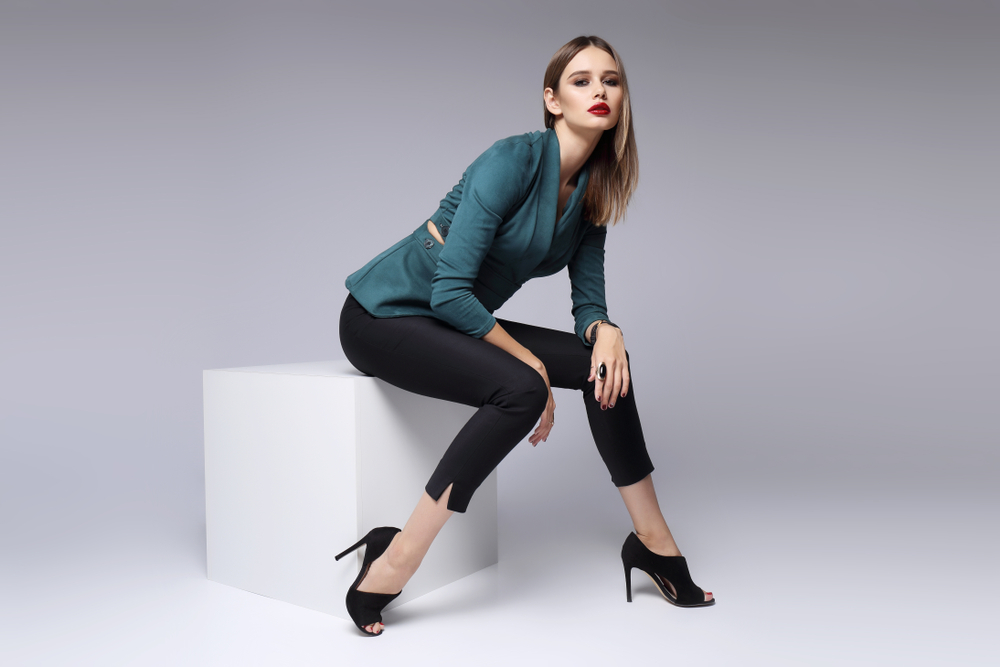
Modeling is an art form that has been a part of the fashion industry for decades. It is the process of showcasing clothing, accessories, or products in a visually appealing way. Behind every stunning photograph is a talented model, a skilled photographer, and a team of experts working together to create magic. In this article, we will dive into the art and science behind modeling (or modelling) in photoshoots, and discover the secrets that make these captivating images come to life.
1. The Essence of Modelingmodelling is not just about looking good in front of the camera; it is about telling a story. Models are the visual storytellers who bring the designer's vision to life. They portray emotions and create a connection with the audience through their expressions, body language, and movement. The right model can transform an ordinary outfit into a work of art, capturing the essence and mood that the designer intended.
2. The Role of the Photographer
A talented photographer is the one who captures the perfect shot, freezing a moment in time that tells a story. They have an eye for detail and an understanding of lighting, composition, and angles. A photographer's skill lies in their ability to communicate with the model, making them feel comfortable and bringing out their best. They create an environment that allows the model to express themselves fully, resulting in breathtaking images.
3. The Collaboration with Stylists and Makeup Artists
While models and photographers play a crucial role, the collaboration with stylists and makeup artists is equally important. The right styling can elevate an outfit, making it look more appealing and desirable. Stylists carefully select the garments, accessories, and props that will enhance the overall concept. Makeup artists, on the other hand, work their magic to enhance the model's features, ensuring they look flawless on camera. The teamwork between all these professionals is what creates a cohesive and visually stunning final product.
4. The Technicalities of modeling
modelling (or modeling) is more than just posing. Models must learn to control their body movements and expressions to convey the desired message. They need to understand their angles and how to make the most of their features. It requires practice, patience, and confidence to achieve that perfect shot. Models also need to be adaptable and comfortable working in different environments, whether it's a studio, outdoor location, or runway. They must be able to take direction and bring their own creative energy to the table.
5. The Evolution of modeling (by models)
Over the years, modeling has evolved, becoming more diverse and inclusive. While the industry once prioritized specific body types and looks, it has now embraced diversity and individuality. Today, models of all shapes, sizes, and backgrounds are celebrated for their unique beauty. This shift has opened up opportunities for aspiring models who may not fit the conventional standards. The industry now understands that beauty comes in many forms and that representation matters.
6. Frequently Asked Questions
Q1: How can I become a model?A1: Building a successful modeling career requires dedication and hard work. Start by creating a portfolio of professional photos showcasing your versatility. Reach out to reputable modeling agencies and attend open casting calls to get noticed. Remember to maintain a healthy lifestyle and take care of your physical and mental wellbeing.
Q2: Can anyone become a model?
A2: Yes, anyone with the passion, drive, and potential can become a model. The industry is now more inclusive and diverse than ever before, embracing various body types, sizes, and looks. The key is to find your niche and work on developing your skills and unique qualities.
Q3: Do I need professional training to become a model?
A3: While professional training can be beneficial, it is not a prerequisite to becoming a model. Many successful models have honed their skills through practice, experience, and learning on the job. However, attending modeling workshops or classes can help you learn essential techniques and gain valuable insights from industry professionals.
Q4: How do I prepare for a photoshoot?
A4: Preparation is crucial for a successful photoshoot. Start by understanding the concept and theme of the shoot, and research poses and expressions that suit the mood. Practice in front of a mirror to get comfortable with different poses. Make sure to get enough rest, stay hydrated, and follow any specific instructions provided by the team.
Q5: Is modeling a sustainable career?
A5: Modeling can be a fulfilling and financially rewarding career for those who are dedicated and persistent. However, it is important to note that the industry is highly competitive, and success may not come overnight. Building a solid foundation, maintaining professionalism, and nurturing relationships within the industry are key to longevity in the modeling world.
Modeling is an art and a science that combines vision, skill, and creativity. Behind every stunning photograph is a team of dedicated professionals working together to create magic. From the models who bring the vision to life, to the photographers, stylists, and makeup artists who collaborate to create a visually captivating image, modeling is a true art form. As the industry continues to evolve and embrace diversity, the future of modeling holds exciting possibilities for aspiring models around the world.
Other useful resources
- https://en.wikipedia.org/wiki/Modeling_agency
- https://blog.planetmodelphoto.com